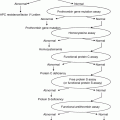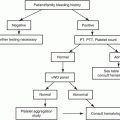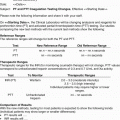General responsibilities
Personnel
Facilities and safety
Test procedures
Quality management
Consultation and education
Communication
Operational management
Overall operation and administration
Needs assessment
Biosafety
Test menu selection
Quality program
Accessible to medical staff and laboratory staff
Clinicians
Strategic planning
Definition of others’ duties
Job descriptions
Chemical hygiene
Method selection
Quality standards
Test ordering
Patients
Capital budgets
Delegation of authority
Hiring standards
Ergonomics
Method validation
Quality assessment
Result interpretation
Administration
Operational budgets
Retention of responsibility
Staff selection
Quality control program
Proficiency testing
Therapeutic recommendations
Lab staff
Research and development
Licensure and accreditation
Assignment of duties
Harmonization or standardization of methods
Inter-method comparisons
Troubleshooting
Risk management
Contracting
Medical staff privileges
Delegation
Requisitions/ordering processes
Audits
Utilization patterns
Regulators
Marketing
Training standards
Specimen acceptance and rejection criteria
Surveys
Test menu changes
Accreditation or certification bodies
Billing
Staff training
Specimen collection and handling
Inspections
Staff continuing education
Organizational goals
Competency standards
Transportation
Problem reports
Clinician education
Metrics
Result reporting
Remedial actions
Institutional education program support
Contingency plans
Performance
Standard operating procedures
Quality improvement
Performance standards
Reference laboratory selection and monitoring
Performance reviews
Remedial actions
For any given laboratory, the laboratory director’s responsibilities are defined in large measure by prevailing regulations and the standards of accreditation bodies. Responsibilities may be further defined by the organizational structure of the institution and contractual arrangements between the institution and laboratory director; however, organizational structure and contracts do not absolve the laboratory director of responsibilities defined by regulations and accreditation standards.
Each set of regulations or accreditation standards is unique, with its own emphasis on the director’s responsibilities. Some define detailed responsibilities while others provide few specifics. Table 1.2 illustrates these differences by listing the duties specifically attributed to the laboratory director in three sets of regulations or standards. The one point on which all agree is that the laboratory director is responsible for assuring that the laboratory complies with all provisions of the regulations or standards. An abstraction from the various definitions suggests that the laboratory director’s responsibilities may be broadly categorized into general responsibilities, personnel, facilities and safety, test procedures, quality management, consultation and education, communication, and operational management. This chapter will discuss specific responsibilities within each of these categories.
Table 1.2
Examples of regulations and accreditation standards defining the laboratory director’s role and responsibilities
Category | Laboratory director’s responsibilitiesa as defined by: | ||
|---|---|---|---|
US Clinical Laboratory Improvement Amendments of 1988 (CLIA) | College of American Pathologists (CAP) | International Organization for Standardization (ISO) | |
General responsibilities | |||
Overall operation and administration | Take responsibility for the overall operation and administration of the laboratory, including employment of personnel who are competent to perform test procedures, record and report test results promptly, accurately and proficiently | Assume professional, scientific, consultative, organizational, administrative, and educational responsibilities | Take responsibility for the professional, scientific, consultative or advisory, organizational, administrative and educational matters relevant to the services offered by the laboratory |
Be ultimately responsible for compliance with the Standards for Accreditation | |||
Duties and delegation | If desired, delegate duties of the technical supervisor, technical consultant, clinical consultant, general supervisor, and testing personnel to qualified personnel | If desired, delegate administrative, medical and technical responsibilities to qualified individuals. If not qualified to direct any laboratory sections, retain qualified individuals to direct those sections | If desired, delegate selected duties and/or responsibilities to qualified personnel |
Specify, in writing, the responsibilities and duties of each consultant, supervisor, and person engaged in any phase of testing | |||
Retention of responsibility | If responsibilities are reapportioned, remain responsible for ensuring that all duties are properly performed | If duties are delegated, remain responsible to ensure that quality patient services are provided | If responsibilities are delegated, maintain ultimate responsibility for the overall operation and administration of the laboratory |
Licensure and accreditation | Assure compliance with applicable regulations | Maintaining CAP Standards, implementing requirements of Accreditation Checklists, and documenting compliance | |
Medical staff privileges | As applicable, serve as an active member of the medical staff for facilities served | Serve as a contributing member of the medical staff for those facilities served | |
Personnel | |||
Supervision | Ensure that a general supervisor provides on-site supervision of high complexity testing | ||
Identify whether supervision is required for specimen processing, test performance or result reporting | |||
Identify whether supervisory or director review is required prior to reporting patient test results | |||
Adequate staffing | Employ a sufficient number of laboratory personnel with the education, training, and experience to provide appropriate consultation, properly supervise and accurately perform tests and report test results | Ensure that there are sufficient qualified personnel with adequate documented training and experience to meet the needs of the laboratory | Ensure that there are appropriate numbers of staff with the required education, training and competence to provide medical laboratory services that meet the needs and requirements of the users |
Training and competence | Ensure that prior to testing patients’ specimens, all personnel have appropriate education and experience, appropriate training for the type and complexity of the services offered, and demonstrated that they can perform testing operations reliably to provide and report accurate results | ||
Monitoring competence | Ensure that policies and procedures are established for monitoring individuals to assure personnel are competent and maintain their competency to process specimens, perform test procedures and report test results promptly and proficiently, and to assure identification of needs for remedial training or continuing education to improve skills | ||
Test authorization | Identify which examinations and procedures each individual is authorized to perform | ||
Personnel management | Identify which examinations and procedures each individual is authorized to perform | ||
Facilities and safety | |||
Facilities and safety | Ensure that the physical plant and environmental conditions of the laboratory are appropriate for the testing performed and provide a safe environment in which employees are protected from physical, chemical, and biological hazards | Implement a safe laboratory environment in compliance with good practice and applicable regulations | Implement a safe laboratory environment in compliance with good practice and applicable requirements |
Test procedures | |||
Quality in preanalytic, analytic and postanalytic phases | Ensure that testing systems provide quality laboratory services for all aspects of test performance | ||
Test methods | Ensure that test methodologies can provide the quality of results required for patient care | Provide input into the selection of equipment, methods, and reagents appropriate to the needs of patients, the scope of testing, and the financial constraints on the laboratory or institution | |
Verification of performance characteristics | Ensure that verification procedures are adequate to determine the accuracy, precision, and other pertinent performance characteristics of test methods | ||
Test performance | Ensure that personnel perform test methods as required for accurate and reliable results | ||
Quality control | Ensure that the quality control program is established and maintained to assure the quality of laboratory services and identify failures in quality as they occur | Define, implement, and monitor standards of performance in quality control | |
Analytical performance levels | Ensure the establishment and maintenance of acceptable levels of analytical performance for each test system | ||
Remedial actions | Ensure that all necessary remedial actions are taken and documented whenever significant deviations from the laboratory’s established performance characteristics are identified, and that patient test results are reported only when the system is functioning properly
Stay updated, free articles. Join our Telegram channel
Full access? Get Clinical Tree
 Get Clinical Tree app for offline access
Get Clinical Tree app for offline access

| ||



